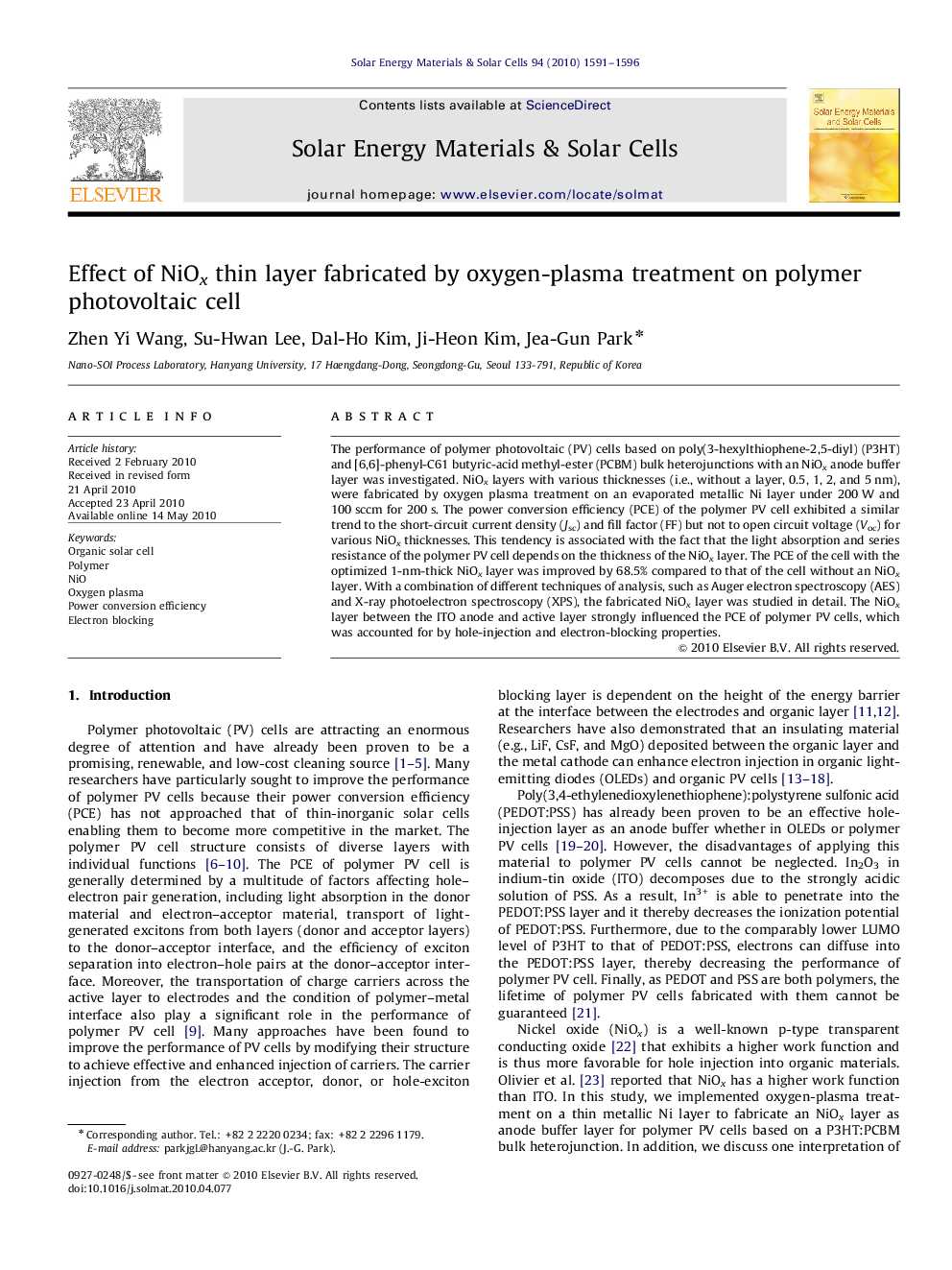| Article ID | Journal | Published Year | Pages | File Type |
|---|---|---|---|---|
| 79509 | Solar Energy Materials and Solar Cells | 2010 | 6 Pages |
The performance of polymer photovoltaic (PV) cells based on poly(3-hexylthiophene-2,5-diyl) (P3HT) and [6,6]-phenyl-C61 butyric-acid methyl-ester (PCBM) bulk heterojunctions with an NiOx anode buffer layer was investigated. NiOx layers with various thicknesses (i.e., without a layer, 0.5, 1, 2, and 5 nm), were fabricated by oxygen plasma treatment on an evaporated metallic Ni layer under 200 W and 100 sccm for 200 s. The power conversion efficiency (PCE) of the polymer PV cell exhibited a similar trend to the short-circuit current density (Jsc) and fill factor (FF) but not to open circuit voltage (Voc) for various NiOx thicknesses. This tendency is associated with the fact that the light absorption and series resistance of the polymer PV cell depends on the thickness of the NiOx layer. The PCE of the cell with the optimized 1-nm-thick NiOx layer was improved by 68.5% compared to that of the cell without an NiOx layer. With a combination of different techniques of analysis, such as Auger electron spectroscopy (AES) and X-ray photoelectron spectroscopy (XPS), the fabricated NiOx layer was studied in detail. The NiOx layer between the ITO anode and active layer strongly influenced the PCE of polymer PV cells, which was accounted for by hole-injection and electron-blocking properties.
